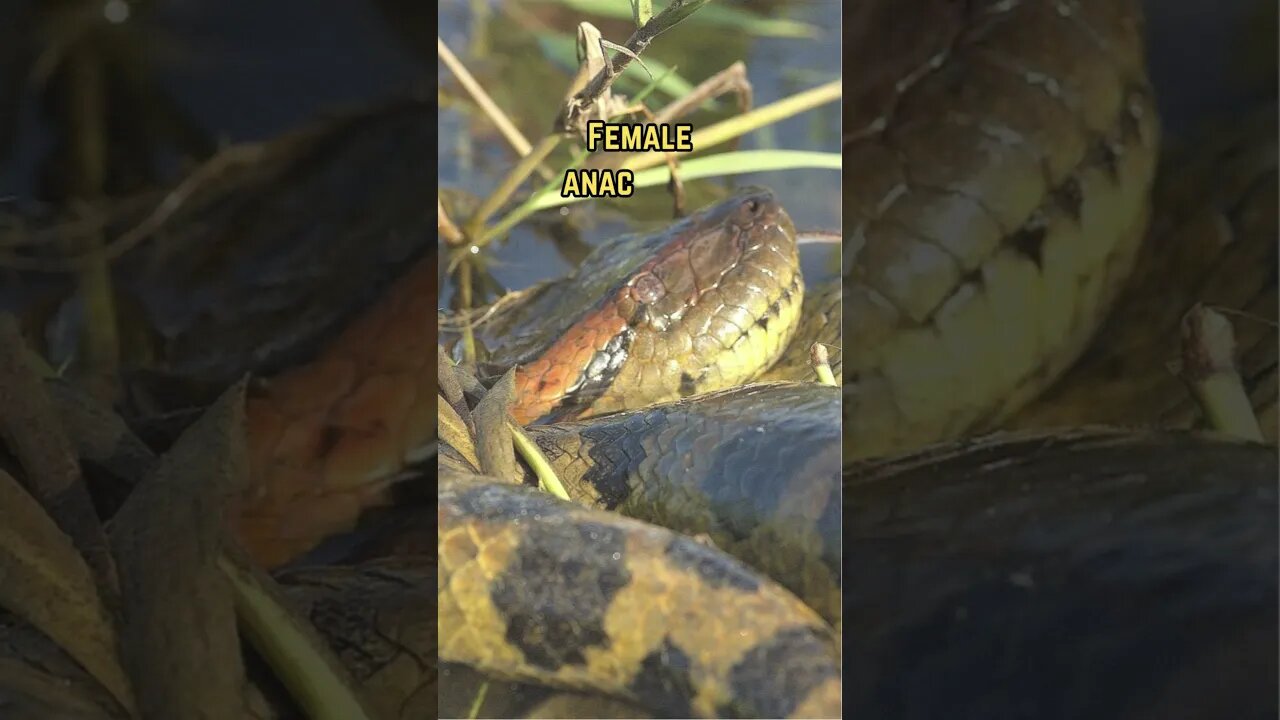Premium Only Content

7 Facts about Anacondas #shorts #facts #anaconda
Anaconda
2 Scientific Name: Eunectes
3 Family: Boidae (the boa family)
4 Size: Anacondas are some of the largest snakes in the world, with the green anaconda being the heaviest and reaching lengths of up to 29 feet (8.8 meters).
5 Habitat: They are found in the tropical rainforests, swamps, and rivers of South America.
6 Diet: Anacondas are powerful constrictors and primarily feed on aquatic prey like fish, birds, and mammals.
7 Swimming Ability: They are excellent swimmers, often found in water, and can stay submerged for extended periods.
8 Reproduction: Female anacondas give birth to live young, with litters ranging from 20 to 40 offspring.
9 Gestation: The gestation period for anacondas is approximately 6 to 7 months.
10 Coloration: Anacondas come in different colors, with the green anaconda being greenish in color, and yellow and dark brown anacondas are also known.
11 Scale Arrangement: Their scales are smooth and arranged in overlapping patterns.
12 Behavior: Anacondas are primarily solitary, ambush predators that lie in wait for their prey.
13 Conservation Status: Some anaconda species are not considered threatened, but habitat destruction is a significant concern.
14 Mythology: Anacondas have been a subject of myth and legend in South American folklore.
15 Threat Display: Anacondas can flatten their bodies and display aggression when threatened.
16 Venom: Anacondas are not venomous; they rely on constriction to subdue their prey.
17 Size Variability: Anacondas can vary significantly in size, with some reaching larger sizes than others.
18 Digestion: After a large meal, anacondas may not need to eat again for weeks or even months.
19 Hunting Strategy: They often hunt in and around water, where they can ambush prey.
20 Cultural Significance: Anacondas have fascinated people for centuries and have been featured in literature, films, and popular culture.
-
 LIVE
LIVE
The Charlie Kirk Show
1 hour agoTRUMP WINS: The Aftermath | 11.6.24
43,695 watching -
 DVR
DVR
Neil McCoy-Ward
56 minutes agoThis Is Why You Don't Mess With The AMISH...
-
 DVR
DVR
TheAlecLaceShow
1 hour agoDonald Trump WINS in a Landslide Victory | My Reaction | The Alec Lace Show
69 -
 1:00:07
1:00:07
The Dan Bongino Show
5 hours agoWe Are So Back (Ep. 2365) - 11/06/2024
1.09M3.12K -
 1:41:46
1:41:46
Breaking Points
2 hours ago11/6/24: LIVE Breaking Points Post-Election Coverage
37.2K -
 50:29
50:29
Grant Stinchfield
2 hours agoTrump's Day One Check List That Will Make America America Again
1.9K3 -
 LIVE
LIVE
Midnight's Edge
3 hours agoHollywood in shock following Trump victory, feat @TheCriticalDrinker | MEiTM #636
690 watching -
 1:14:37
1:14:37
The Rubin Report
3 hours agoUFC Legend’s Unexpected Speech at Trump Victory Party Makes Crowd Go Nut
83K29 -
 1:07:31
1:07:31
Michael Franzese
11 hours agoTrump is in! Post Election Livestream
63.1K35 -
 LIVE
LIVE
Benny Johnson
2 hours agoVICTORY: Trump STUNS World with Historic LANDSLIDE, WINS Popular Vote! Libs MELTDOWN In Salty RAGE🔥
19,243 watching